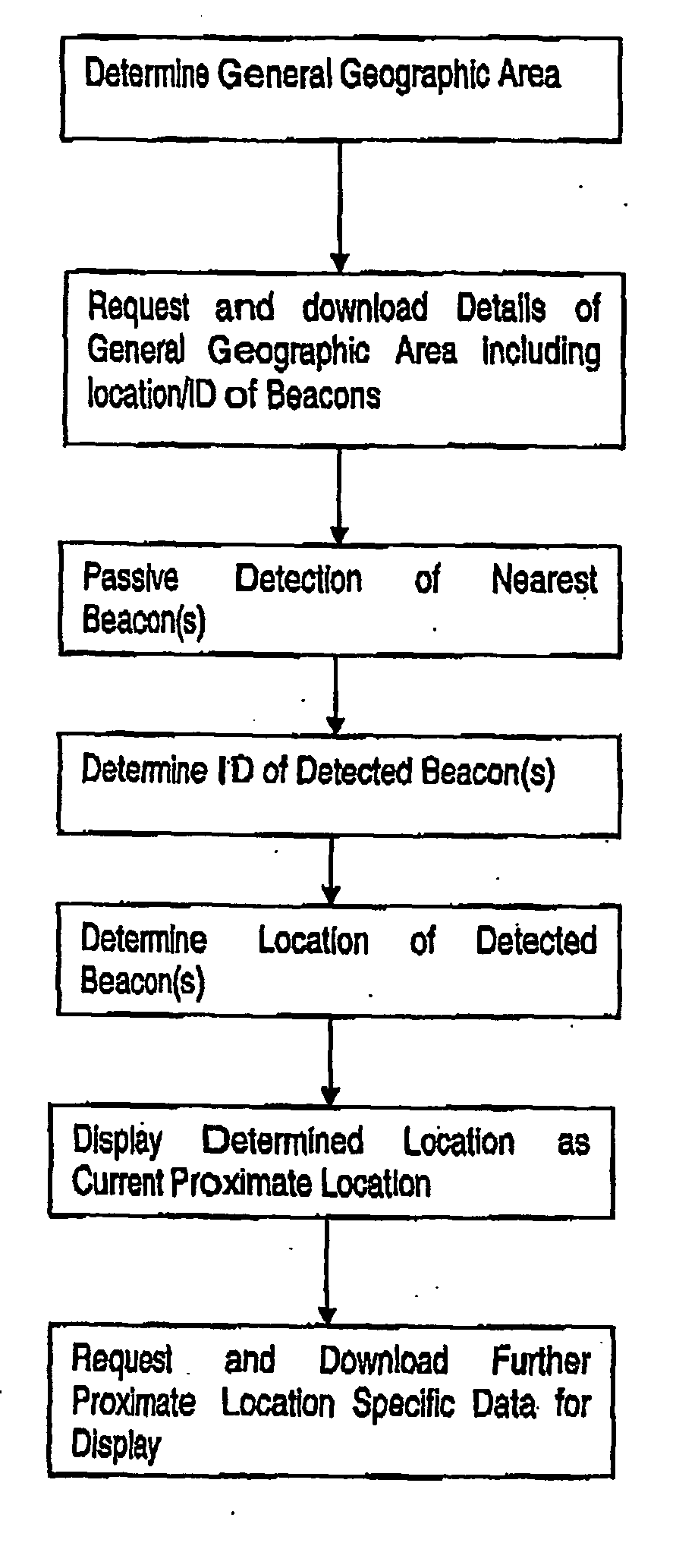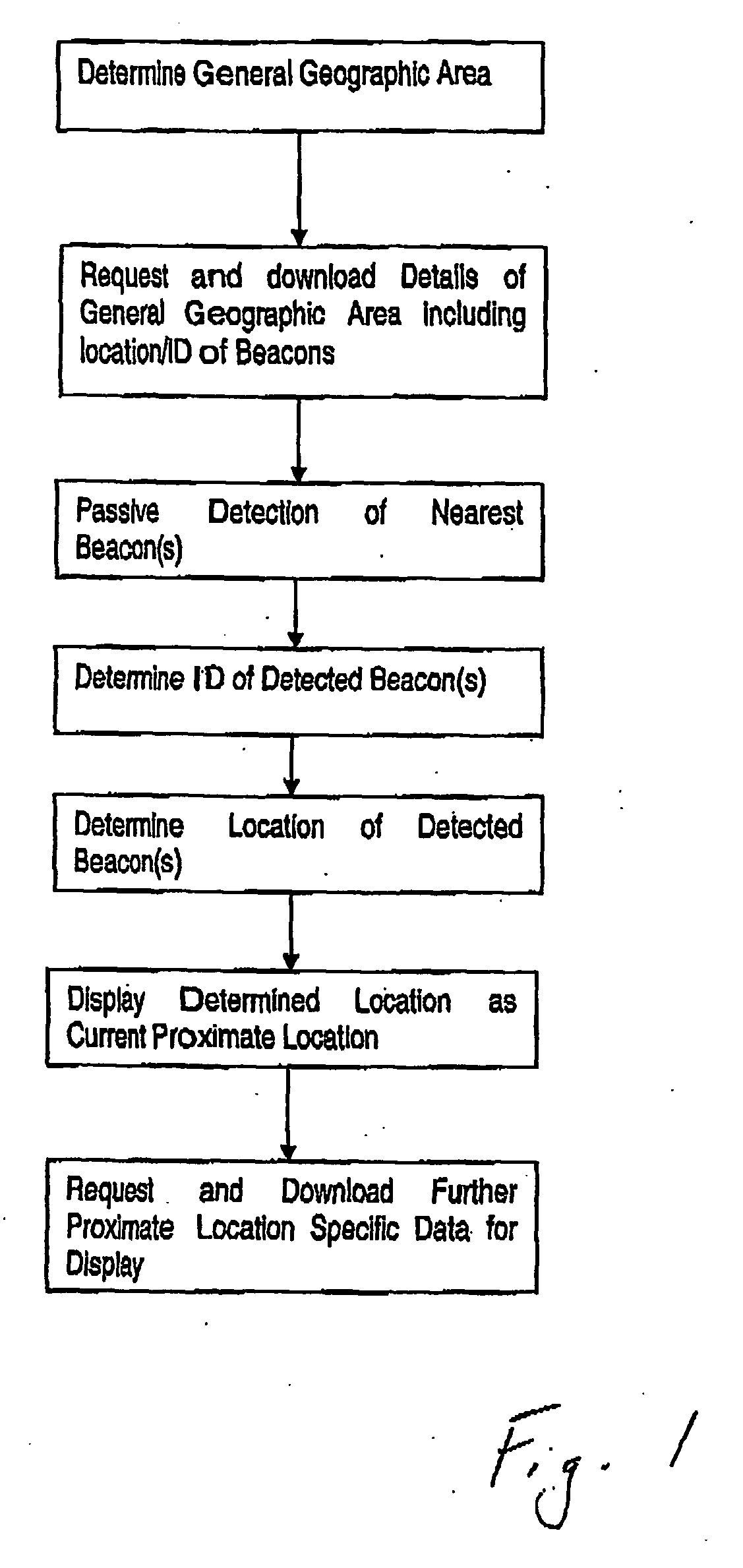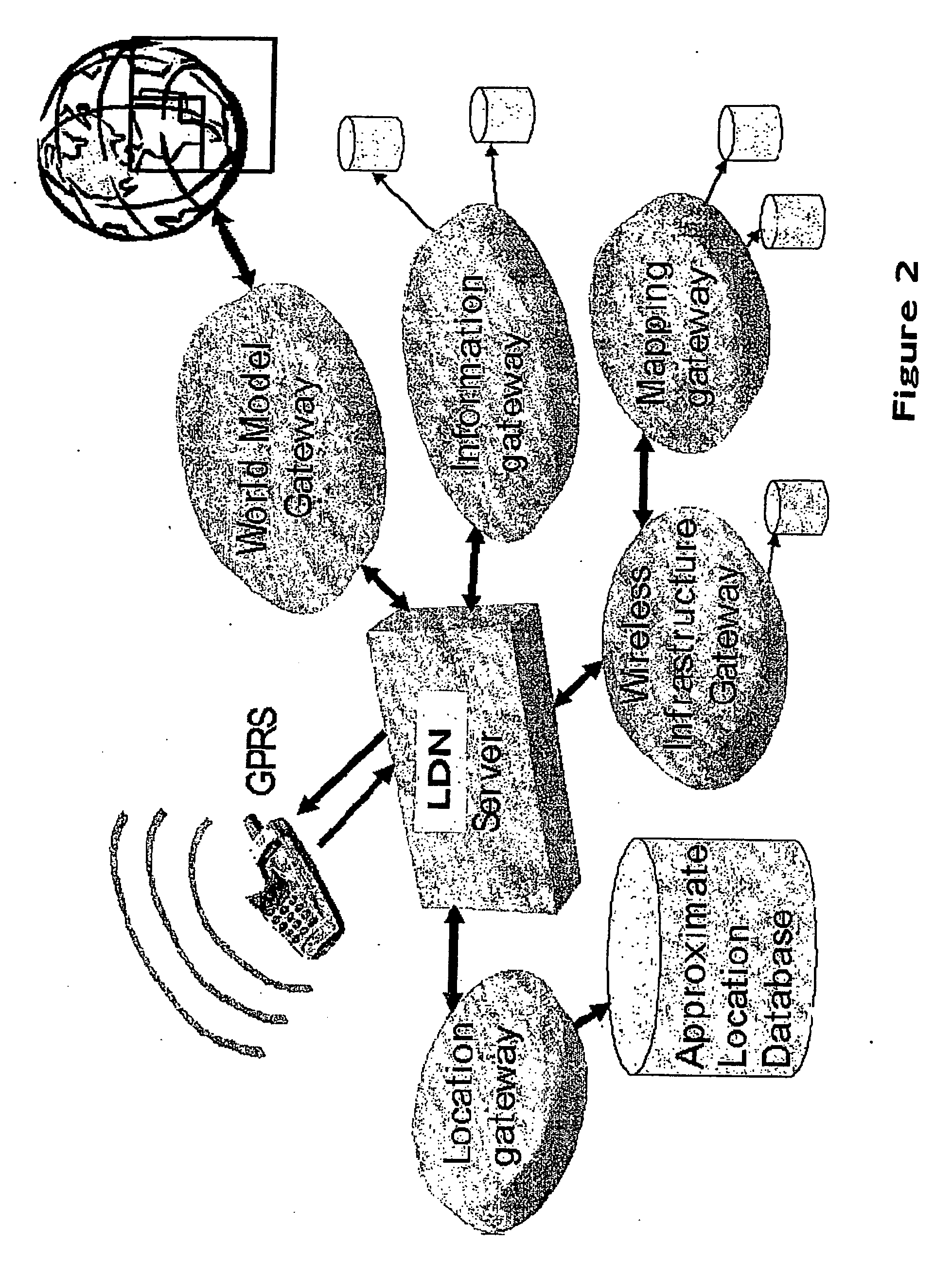Proximate location detection system and method
a detection system and location technology, applied in the direction of navigation instruments, instruments, assess restrictions, etc., can solve the problems of more sensitive and expensive implementation of such systems in commercial environments
- Summary
- Abstract
- Description
- Claims
- Application Information
AI Technical Summary
Benefits of technology
Problems solved by technology
Method used
Image
Examples
Embodiment Construction
[0058] The aspect of the present invention that allows a user to determine his / her location (to an acceptable degree of resolution) within a general geographical area will be described by way of example in a specific implementation with reference to the flowchart of FIG. 1.
[0059] From a system point of view, the hardware of which is described below with reference to FIG. 2, the user initially needs to determine the general geographic area in which he / she is presently located. The user's mobile location indicating device is, in a preferred form of the invention, incorporated in a cellular mobile handset. Therefore, the general geographic area may be readily determined in a known manner by identifying the nearest base station of the mobile telephony network. It will be appreciated that a cellular base station is intended to cover a particular geographic area, i.e., its cell area, typically the cell area is an area of approximately 500 square meters. Thus this cell area will be taken ...
PUM
 Login to View More
Login to View More Abstract
Description
Claims
Application Information
 Login to View More
Login to View More - R&D
- Intellectual Property
- Life Sciences
- Materials
- Tech Scout
- Unparalleled Data Quality
- Higher Quality Content
- 60% Fewer Hallucinations
Browse by: Latest US Patents, China's latest patents, Technical Efficacy Thesaurus, Application Domain, Technology Topic, Popular Technical Reports.
© 2025 PatSnap. All rights reserved.Legal|Privacy policy|Modern Slavery Act Transparency Statement|Sitemap|About US| Contact US: help@patsnap.com



